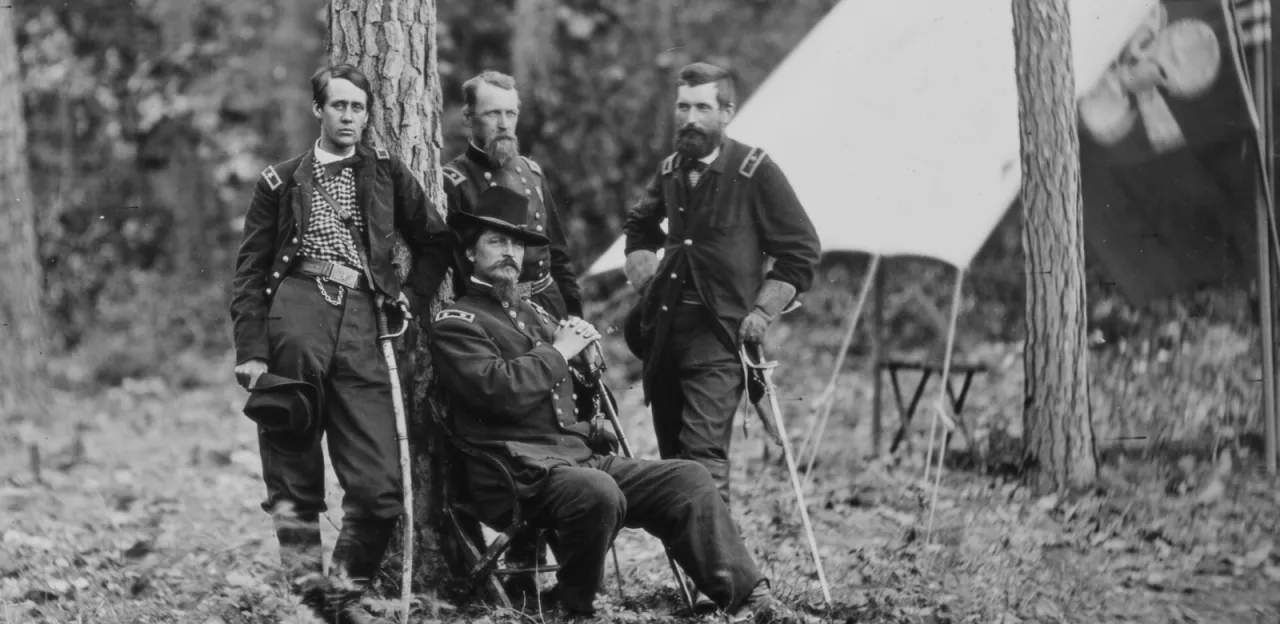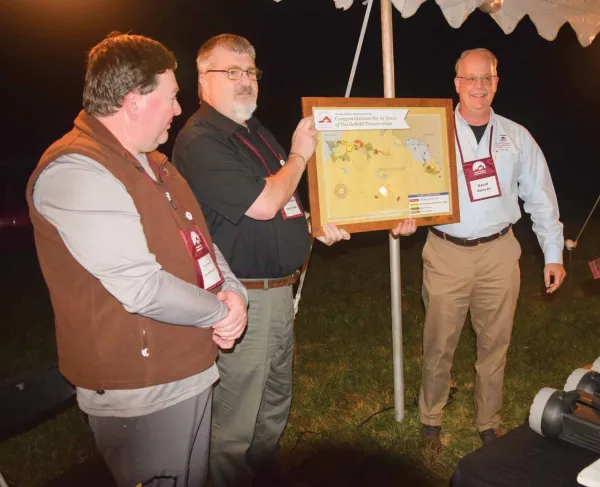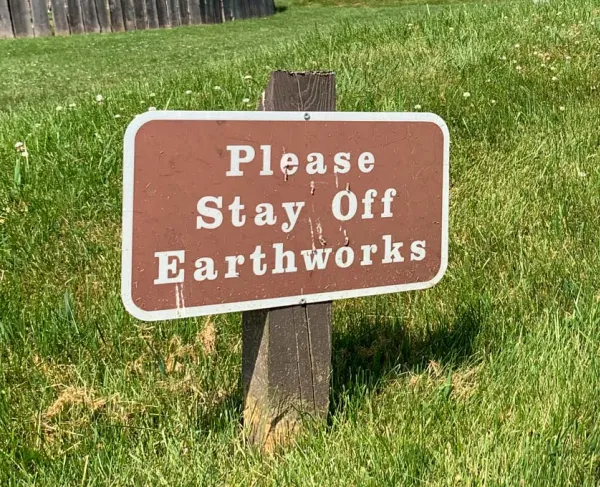“The Men Fell in Heaps”

Daniel T. Davis
Darkness still covered the land but the dirty and tired infantry dressed in blue readied themselves for the upcoming battle. For the men of Brig. Gen. Francis C. Barlow’s First Division of Maj. Gen. Winfield Scott Hancock’s II Corps, it was a familiar situation. Weeks earlier, at Spotsylvania Court House, Barlow had participated in an assault on a massive bulge in the Confederate line known as the Mule Shoe Salient. Barlow stepped off before dawn and struck the tip and eastern end of the position, peeling open the Confederate line. Then under pressure from Southern counterattacks and without supports, Barlow relinquished his hold on the captured earthworks. Now, before sunrise on June 3, 1864, Barlow prepared to launch another attack on the enemy line at Cold Harbor.
Unlike many of his contemporaries, Barlow did not attend the U.S. Military Academy at West Point. A native of New York, he graduated from Harvard in 1855 and practiced law before the war. Following service in a three months regiment, he received an officer’s commission in the 61st New York and fought in the Seven Days’ Battles and at Antietam, where he was wounded. Barlow eventually rose to command a division in the XI Corps and was wounded again at Gettysburg. Upon his return to the army in early 1864, he was assigned to the II Corps for the upcoming spring campaign.
After a stalemate along Totopotomoy Creek and at Bethesda Church in late May, Lt. Gen. Ulysses S. Grant and Gen. Robert E. Lee set their eyes on an innocuous location on the map called Cold Harbor. The site lay between both the Confederate capital at Richmond and the main Union supply base on the Pamunkey River. Fighting erupted there in earnest on the morning of June 1. Fortunately, Union cavalry, which had captured the crossroads on June 1, managed to hold on against gray infantry until Grant’s reinforcements arrived. Later that afternoon, the Federals attacked the Confederates, who had dug in just west of Cold Harbor. Although his gains were minimal, Grant was emboldened by this initial success and planned for another, larger attack as both armies continued to shift troops to the area.
That evening, Hancock abandoned his lines at Totopotomoy Creek and marched through the night. A little after 6 a.m. on June 2, Cold Harbor came into view. Barlow’s division shuffled into position on the Union left, just east of Dispatch Station Road. On Barlow’s right was Brig. Gen. John Gibbon’s division. Maj. Gen. David Birney stood in support of Gibbon and Barlow. Orders for the next morning were circulated that night and preparations were made for Grant’s grand assault. He formed his men in two lines. Brig. Gen. Nelson Miles’ brigade stood on the left of the first line. Behind him was the famous Irish Brigade, led by Col. Richard Byrnes. To Miles’ right was the brigade of Col. John R. Brooke. Supporting Brooke and to the right of Byrnes was Col. Clinton MacDougall’s command.
Directly across the open space from Barlow was Maj. Gen. John C. Breckinridge’s division. Breckinridge had placed a salient to his front, held by Col. George Edgar’s 26th Virginia Battalion and a company of the 22nd Virginia from Col. George Patton’s brigade. Atop a high ridge, it was known as “Edgar’s Salient”. Just two weeks prior, Barlow’s men had been called up to attack another salient, the “Mule Shoe,” at Spotsylvania Courthouse.
Around 4:30 a.m. a signal gun sounded the advance and Barlow’s division moved forward. Miles, who had detached two of his regiments to picket his left, received heavy fire from Breckenridge’s line as they approached the Dispatch Station Road. Realizing the futility of a further advance, the Federals took shelter in the road cut. While their sister regiments ground to a halt, the 5th New Hampshire, surged forward “on the double-quick without firing a shot,” remembered Maj. James Larkin. Approaching Edgar’s Salient, the Federals stormed over and entered the Confederate works.
The men from the Granite State were not alone in Edgar’s Salient. Through “terrific fighting” the 7th New York Heavy Artillery from Brooke’s brigade also penetrated the Confederate line. After spending the early stages of the war manning the Washington defenses, the regiment was given muskets, converted to infantrymen and joined the army at Spotsylvania.
Brooke and Miles had gained a toehold on Breckinridge’s line. Recognizing the opportunity, Brooke, who had ridden forward with the 7th New York, galloped back to hurry up the rest of his brigade. While directing the 148th Pennsylvania forward, he was wounded by canister fire. Assuming the advance, Brooke’s men were “exposed to a disastrous fire of artillery and musketry, and the command suffered severely in killed and wounded,” remembered an officer in the 53rd Pennsylvania, and were unable to reach their comrades inside the salient.
Behind Miles, Byrnes’ Irish Brigade also advanced. A frustrated captain in the 28th Massachusetts, James Fleming, wrote his regiment lost “much in…officers and men without having the satisfaction of punishing the enemy in return…the men fell in heaps.” The Bay Staters “suffered heavily,” added Private John Ryan. In the midst of the attack, Byrnes was mortally wounded.
Unlike the Federals, the Confederates were able to send in reinforcements. Patton had watched as the Yankees swarmed over his works. Behind him and to his left rear was a reserve line and he immediately sent for help. Coming to his aid was Capt. J.P. Crane’s 2nd Maryland Battalion along with Col. Joseph Finegan’s Florida brigade from Maj. Gen. Cadmus Wilcox’s division. Slamming into the 5th New Hampshire, they steadily began to drive the Federals back. Contending with Edgar’s Virginians, the New Yorkers were also caught up in the counterattacks by Crane and Finnegan. “The enemy supports…opened a galling cross-fire,” Larkin recalled. Pressed in on both flanks, the blue infantry were forced to abandon the hard won works. Stubbornly, the New Yorkers reformed on the slope below Edgar’s Salient. Not willing to give up the fight just yet, they launched a second attack alone. This time, they did not even reach the enemy line before retreating .
Within an hour after his advance began, Barlow’s attack over. Up and down the Union line, other attacks proved just as futile. Early in the afternoon, Grant suspended any further operations. His assault on June 3 had gained little more than the one two days earlier. Barlow, however, could claim his was the only division to break through, but at a high cost. The 7th New York Heavy Artillery lost a little over a quarter in killed, wounded and missing of the 1,600 engaged while the 5th New Hampshire left nearly half its men on the field as casualties. Similar to the Mule Shoe Salient at Spotsylvania, Barlow had breached the Confederate position, only to be driven out due to the lack of support. At the critical moment, the loss of Brooke and Byrnes in pressing the attack proved crucial. “Up to the time I was wounded the assault was successful” Brooke lamented. “Had I been able to keep the field for a short time longer, I am confident the enemy could not have regained their works.” Additionally, Miles failed to add the weight of his regiments that had stopped in the Dispatch Station Road. Some blame can also be placed on Barlow. When his men needed a steady, guiding hand, he remained in the rear directing the action.
Related Battles
17,000
13,000
18,399
12,687





